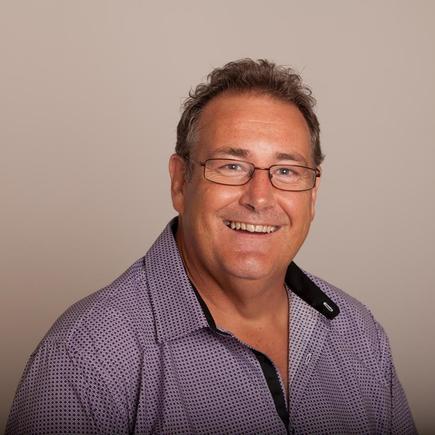
I have been a fan of Stephen Covey's 7 habits for a long time now. It has been very influential in how I look at the world and how I live my life, despite my constant failures to live up to the habits. It has also been influential in my understanding of what you need to do to be successful in realising the value of technology for organisations that I work with. You can see the influence of Covey's work in my ideas.
Despite this influence, it is only now that I have mapped Covey's 7 habits and how they can help CIOs with the task of creating value from IT. This is part 2 where I look at habits 4 to 7. You can find part 1 here.

Both empathy and curiosity about your colleagues will lead you to understand what their win is and set you up to think about how to deliver it.
Habit 4: Think win-win. This instructs us to have an “everyone can win” attitude. Win-win sees life as a cooperative arena, not a competitive one. Win-win is a frame of mind and heart that constantly seeks mutual benefit in all human interactions. Win-win means agreements or solutions are mutually beneficial and satisfying. Covey goes so far as to say that if you can’t get win- win, then no deal is an OK option and much better than the alternative of win- lose.
For a CIO, this leads us to think about all of our work from the perspective that everyone can win for any initiatives undertaken as well as ensuring that on an ongoing day to day basis that both the users of IT and the IT team win.
In fact, in its ideal form think win-win would become win, win, win. The organisation wins, the customers/users win and the IT team wins. In order to think win-win you need to be able to think from multiple perspectives rather than our human default of thinking primarily (or perhaps only from our own perspective).
In my experience there are two states of mind that can lead us to thinking from multiple perspectives. The first is empathy, which is the ability to understand and share the feelings of another. Empathy is probably the preferred approach. However for those of us that struggle with empathy, curiosity works as well. Get curious about the other person, their point of view and understanding why they believe what they believe. Both empathy and curiosity about your colleagues will lead you to understand what their win is and set you up to think about how to deliver it.
State of the CIO 2016: Leading through continuous transformation
Habit 5: Seek first to understand, then to be understood. This asks us to listen to people sincerely and understand their needs before we worry about being understood. This is not particularly natural for most people. Our default reaction is to seek first to be understood; you want to get your point across. And in doing so, you tend to ignore the other person completely, pretend that you're listening, selectively hear only certain parts of the conversation or attentively focus on only the words being said, but miss the meaning entirely.
For a CIO, 'seek first to understand' asks us to listen to our customers before you try and explain the IT view. Understand their needs and frustrations before you begin trying to justify IT's performance, or lack of performance.
Habit 5 asks us to REALLY LISTEN and understand. Do this through your empathy or curiosity skills mentioned above. When you really understand your customers’ needs and can explain it back to them so they agree with you, you understand, then begin to explain your view. Having invested the time to truly understand your customer’s wants and issues opens up the communication channels. Better yet, in my experience you will find out that what your colleagues and customers want is actually quite reasonable. Usually what your colleagues want are systems that work, projects that deliver as promised and customer service that is friendly and keeps them informed of what is happening.
Habit 6: Synergise. This asks that you work cooperatively to achieve more than would be possible if you worked separately. Quite literally synergy means "two heads are better than one”.
Synergy doesn't just happen on its own. It's a process, and through that process, people bring all their personal experience and expertise to the table. Together, they can produce far better results than they could individually. Synergy lets us discover jointly things we are much less likely to discover by ourselves. It is the idea that the whole is greater than the sum of the parts. One plus one equals three, or six, or sixty - you name it.
For the CIO, habit six asks that you work cooperatively across the organisation and within IT to come up with solutions that support the users as they want to be supported, delivers value to the organisation and allows IT to successfully deliver and support the agreed solutions.
There are many articles and books out there that will make recommendations on how to do this. They range from simple brainstorming processes, various root cause analysis techniques, innovation processes, hackathons, cross functional self managing self selecting team and many others. They pretty much all work if done well. Pick some that work for you and operate well within your corporate culture, commit to it and most of all, focus on thinking win-win through the process.
Read more: The top 7 traits of highly effective CIOs (part 1)
Personal renewal is important for a CIO.
The public victory. These three habits culminating in synergy form what Covey calls the public victory. The public victory delivers value to the organisation above and beyond what can be delivered by the individual people or departments.
For the CIO and organisational use of IT, the public victory ultimately creates a coherent IT or digital platform that is leveraged to deliver above market returns to the organisation. In effect, the public victory underpins the organisation’s ability to become a digital leader.
Habit 7: Sharpen the saw. This sets out the requirements to renew yourself regularly to ensure you preserve and enhance your greatest asset - you. Covey defines a balanced program for self-renewal in the four areas of your life: physical, social/emotional, mental, and spiritual.
Personal renewal is important for a CIO. The role of the CIO is complex and difficult, and if you hope to be successful in the long-term you need to look after yourself.
For a CIO, however, ‘sharpen the saw’ goes further than personal renewal. It also implies renewal of your systems to make sure they are maintained properly and constantly improved and perhaps, most importantly, renewing your knowledge of what's possible for your organisation from the use of technology and information.
So there they are - the seven habits of effective CIOs. I'd love your feedback and comments.
Finally, to the late great Stephen Covey. Your work is amazing and a constant source of inspiration to me. Thank you.
Owen McCall is an experienced management consultant and CIO, and a member of the editorial advisory board of CIO New Zealand. Reach him through owenmccall.com.
Join the CIO New Zealand group on LinkedIn. The group is open to CIOs, IT Directors, COOs, CTOs and senior IT managers.
Join the CIO New Zealand group on LinkedIn. The group is open to CIOs, IT Directors, COOs, CTOs and senior IT managers.
